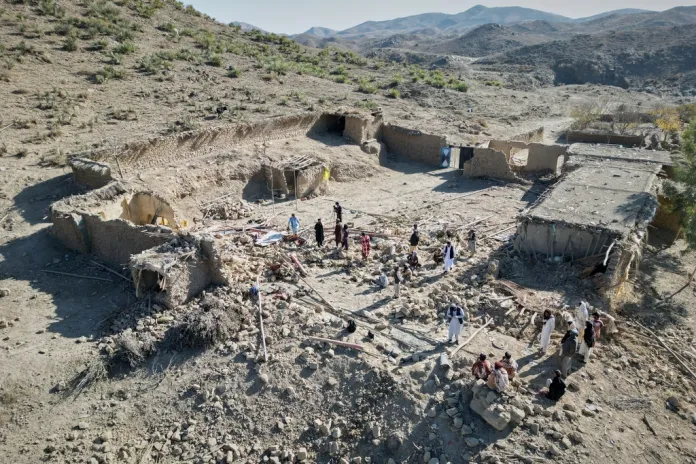The Government’s Response To SVB’s Collapse Could Make Another Banking Crisis More Likely — And More Destructive
On March 10, Silicon Valley Bank — which lends to almost half of all the publicly traded venture capital-backed tech and healthcare companies — collapsed. It was the second largest bank failure in U.S. history, second only to Washington Mutual’s downfall in 2008.
The sudden meltdown of SVB, and the subsequent failure of Signature Bank, has sent shockwaves through the wider economy and raised questions about the soundness of the U.S. banking system.
Treasury Secretary Janet Yellen has maintained that the financial system is sound, but her vacillating comments on whether the government would cover all deposits even if they are over the $250,000 FDIC limit — like it did at SVB — in the event of meltdowns at other banks have left investors worried.
Meanwhile, Federal Reserve Vice Chair for Supervision Michael Barr, FDIC Chairman Martin Gruenberg, and Under Secretary of the Treasury for Domestic Finance Nellie Liang were grilled Tuesday by the Senate Banking Committee over why federal regulators did not recognize the warning signs preceding SVB’s collapse.
Photographer: Samuel Corum/Bloomberg via Getty Images via Getty Images
Despite her boss’s reluctance to say that the government would issue blanket guarantees for all deposits, Liang said that the government would be willing to step in again and insure all deposits if necessary to protect the overall financial system. Gruenberg also said that the FDIC would examine deposit coverage levels as part of a long-term solution.
Many of the assets held by the banks felled in the crisis have been sold to other large financial institutions. These deals — often backed by the federal government and offered at enticing discounts — have allowed large banks to grow even further by picking the carcasses of their former competitors.
The consolidation of the banking system around a few large financial institutions at the expense of smaller banks, whether by acquisition like Credit Suisse or by depositors’ desire to place their money with safer (bigger) banks, could have a massive effect on the wider economy. The greater concentration of assets into banks considered “too big to fail” could incentivize riskier behavior from these institutions, making another collapse — and a backdoor bailout from the government — more likely.
SVB collapsed because of a classic bank run after a poor performance report. Depositors rushed to withdraw their funds and the company suffered heavy losses from the liquidation of a long-term bond portfolio. California regulators quickly stepped in and handed the bank over to the FDIC, which established a government-backed successor corporation, Silicon Valley Bridge Bank, and appointed new senior management to facilitate the implosion.
The FDIC then promised to back all deposits at SVB, even ones exceeding the mandated $250,000 threshold, to prevent runs on similar banks.
The FDIC — through Silicon Valley Bridge Bank — is now preparing to auction off what remains of SVB, which has garnered “substantial interest from multiple parties,” according to a March 20 press release.
The bank failures were confined to mid-sized American banks until Credit Suisse in Switzerland, the eighth largest investment bank in the world, began to collapse after it issued a report identifying “material weaknesses” in the institution’s risk assessment strategy. The bank had $1.3 trillion in assets under management at the end of 2022, but the company’s stock had decreased by more than 80% over the last two years. Additionally, depositors withdrew $119 billion from the bank in the fourth quarter of 2022 alone. After its stock sank further and hit an all-time low on March 14, Credit Suisse’s largest investor, Saudi National Bank, announced that it would not offer any aid to the bank by purchasing more shares over its current stake.
FABRICE COFFRINI/AFP via Getty Images
The Swiss government stepped in and offered Credit Suisse a loan worth a little over $50 billion, but despite a small rebound after the news, the bank’s stock continued its downward spiral on Friday.
UBS, another Swiss bank and the largest private bank in the world, revealed Sunday that it would acquire Credit Suisse for a little over $3 billion in a deal brokered by the Swiss government. Once again, Credit Suisse shares plummeted, this time over 50%. The Swiss National Bank will offer a loan of up to $108 billion to help UBS with the acquisition and it would also cover almost $10 billion in potential losses for UBS. The national bank’s loan and its guarantee to cover certain losses will create a tax liability equal to $13,500 for each Swiss citizen.
Many criticized the Swiss government’s willingness to aid in UBS’ potentially lucrative acquisition with taxpayers’ money.
“We are fed up with the idea that if you are big enough, you get everything,” Christoph Rechsteiner, a partner at Swiss tax consultancy MME, said in an interview with Bloomberg. “The law is changed for you over a weekend.”
“The solution that has been drafted now is that if all comes good, UBS makes a huge profit,” he added. “They got Credit Suisse for nothing at all and the government is backing the losses.”
Credit Suisse is one of 30 banks around the world that are considered too integral to the international banking system to be allowed to collapse — perhaps more infamously known as “too big to fail” banks.
A similar situation is unfolding at Signature Bank, which was shut down by New York state regulators on March 12. Then, the FDIC revealed Sunday that a subsidiary of New York Community Bancorp, Flagstar Bank, would take on almost all of Signature’s deposits. Additionally, it would also acquire some of Signatures loans — at a massive discount — and all of its 40 branches. The FDIC will retain control of $60 billion worth of loans and $4 billion in deposits.
Federal officials also enabled a deal that staved off the collapse of First Republic Bank. Several financial giants, including JPMorgan Chase, Citigroup, and Bank of America, pledged to provide $30 billion worth of assistance to the struggling bank. First Republic stock plunged 73% between March 8 and 13, just as SVB and Signature tumbled, and despite the pledge of support from some of the largest banks in the world, its stock fell even further after the deal was announced.
Several analysts have advocated for the sale of First Republic to a larger institution, with one telling The Wall Street Journal that a merger “should be beneficial for the banking system as a whole, and should help ease contagion fears.”
Another said that the recent events surrounding the company paint “a very dire outlook for the company and shareholders, in our view.”
In a more ominous appraisal, an analyst from JPMorgan told the WSJ that First Republic represented “a higher risk but potentially very high reward name.”
A recent study from the National Bureau of Economic Research found that almost 200 banks in the U.S. are vulnerable to collapse if half of all uninsured depositors demanded their funds. The number at risk for collapse expanded to over 1,600 banks if all uninsured depositors attempted to withdraw their money. The analysis indicated that the Federal Reserve’s repeated increase of the target interest rate in an effort to curb inflation was a primary factor in the current instability of the banking system. The “substantial losses in the value of banks’ long-duration assets” induced by the higher interest rates now implies that “banks are much more fragile” to runs by uninsured depositors, the customers with more than $250,000 in their combined accounts with a given financial institution.
Treasury Secretary Yellen initially stated during a March 17 Senate Finance Committee hearing that the Federal Reserve and FDIC might not cover large deposits at smaller banks like they did for SVB after Sen. James Lankford (R-OK) asked her if community banks would be insured over the limit “regardless of size.”
Al Drago/Bloomberg via Getty Images
Four days later, Yellen seemed to walk that back, declaring during a speech to the American Bankers Association that the “Treasury is committed to ensuring the ongoing health and competitiveness of our vibrant community and regional banking institutions” and that interventions like the one at SVB “could be warranted if smaller institutions suffer deposit runs that pose the risk of contagion.”
Only a couple of days after that, she appeared to buckle on the notion that the government would insure deposits above the FDIC limit at large institutions, assuring the Senate Appropriations Committee that her department has “not considered or discussed anything” related to “blanket insurance or guarantees of all deposits.”
In the hearing from March 17, Lankford observed that “We have seen the mergers of banks over the past decade. I am concerned you are about to accelerate that by encouraging anyone who has a large deposit in a community bank to say, ‘We are not going to make you whole, but if you go to one of our preferred banks, we will make you whole.’”
While Yellen’s official comments have cast doubt on whether or not the government will take actions that will incentivize such consolidation, its actions in response to the crisis seem to bear out Lankford’s concern. Federal regulators have facilitated deals that allow other large institutions to acquire the assets of their former competitors for reduced prices in the name of arresting the spread of “contagion” to other banks. Those banks acquire a greater percentage of the market share and, with fewer competitors and the implicit promise of hefty government assistance if things go wrong, have far more liberty to take risks than they otherwise would.
As seen in the lead-up to the Great Recession in 2007-2008, big banks with little competition and the support of federal regulators indeed tend to adopt riskier business strategies to the ultimate detriment of their depositors. While a useful stopgap measure to prevent a single bank collapse from initiating a domino effect across the whole system, the federal government’s response to the SVB crisis may, in the long term, make a wider financial catastrophe more likely and more harmful to Americans.
" Conservative News Daily does not always share or support the views and opinions expressed here; they are just those of the writer."




